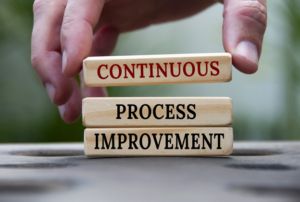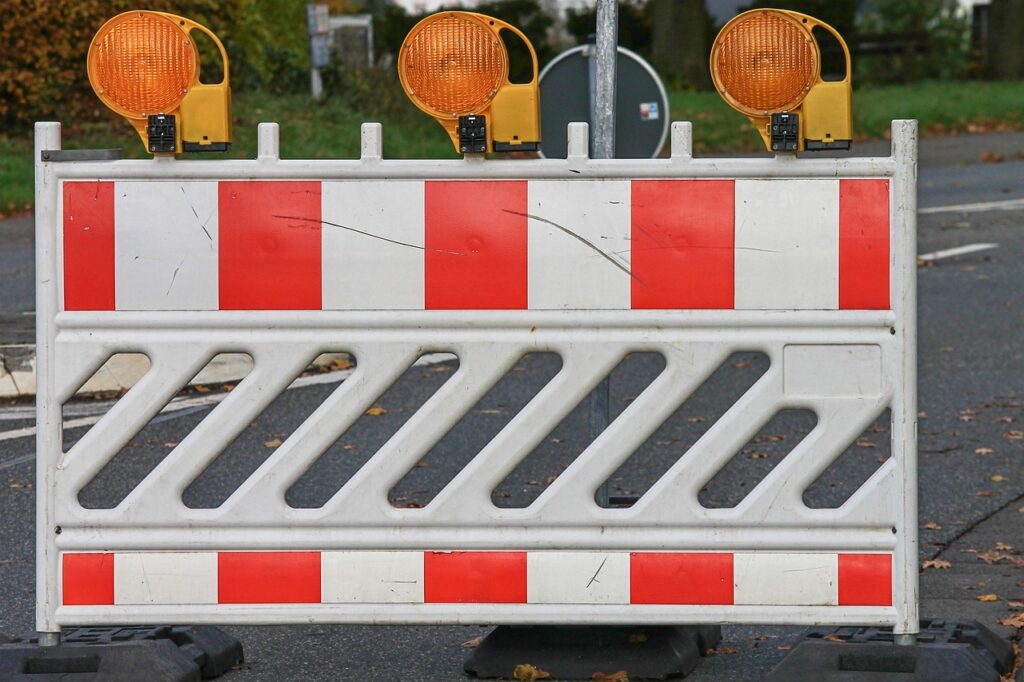In the rapidly evolving business landscape of the present day, being able to perform effective corrective actions that work is key to business survival and success.
Corrective action serves as the pedestal of quality management processes, preventing the recurrence of mistakes and errors, and driving continuous improvement.

Unfortunately, if it is not managed efficiently, it can become a “cog in the wheel of progress” for a company.
Paperwork can easily pile up and high-risk issues can get buried and unaddressed under the mountain of paperwork matters that are less critical, and requiring regulatory compliance.
All these are counter productive to continuous improvement efforts. Planning for how corrective actions will be performed prior to conducting audits is usually the best approach.
Two critical pieces which are often overlooked or not even thought about are a total commitment to, and the performance of corrective actions.
Step 1 – Be Committed to the Continuous Improvement – Corrective Action Process
Sadly, many business owners and leaders are not truly committed to the continuous improvement -corrective action process.
They only play lip service to it, such that when a demand is made for resources (human and financial) they come up with all manner of excuses to delay the work, provide insufficient resources, or relegate it to the back burner.
Step 2 – Someone Competent Should have Accountability for Corrective Actions
Let’s face it, not every company will be able to engage a Quality Manager or Supervisor. However, someone must be accountable for corrective actions – even if this is the business owner. Accountability ensures that work is followed up, and work gets done.
How to Avoid Creating Backlogs with Effective Corrective Actions – 10 Actions
Addressing problems with corrective action without creating a backlog requires a strategic approach and the implementation of efficient processes. The following 10 actions if not conducted or conducted properly can create roadblocks to effectively manage corrective actions:
ACTION 1: For Effective Corrective Actions – Prioritize and Categorize Issues
Not all corrective actions are of equal importance. Categorize issues based on their severity and potential impact on quality and compliance. Prioritize high-risk issues that require immediate attention and allocate resources accordingly.
ACTION 2. Conduct an Effective Root Cause Analysis
Conduct thorough root cause analysis for each issue to identify the underlying reasons behind the problems. By addressing the root cause, you can prevent similar issues from recurring in the future.

ACTION 3. Ensure Cross-functional involvement
Involve relevant stakeholders from different departments in the corrective action process. This helps ensure a comprehensive understanding of the issues and potential solutions. It also fosters a sense of shared responsibility for quality improvement.
ACTION 4. Develop Clear Action plans and Communicate
Develop clear and concise action plans for each corrective action. Define specific tasks, responsibilities, deadlines, and expected outcomes.
This clarity will streamline the process and make it easier to track progress.
Most importantly, communicate this information to relevant internal divisions and employees that need to know about this. Of what use is the plan, if the human resources that will be involved in the corrective actions are unaware of the proposed work?
This is usually a major roadblock to implementing corrective action.
ACTION 5. Use Automation and Digital Tools
Wherever possible leverage technology and automation to streamline the corrective action process. Use quality management software or digital tools to track and manage corrective actions, automate notifications and reminders, and maintain a centralized repository of information.
This will save you a lot of time.
However, this can itself be a roadblock as all work is stayed while the search begins for digital tools and software for the business. It does not have to be so.
A simple spreadsheet with a list of corrective actions, names of responsible individuals, and deadlines will work fine in the interim and ensure that work gets done.
ACTION 6. Conduct Regular Reviews and Updates

Conduct periodic reviews of the corrective action status. This helps in identifying delays or roadblocks early on and allows for timely interventions.
If there are changes in regulations or standards, update the corrective action plans accordingly.
ACTION 7. Promote a Continuous Improvement Mindset
Instill a culture of continuous improvement within the organization. Conduct regular internal operational audits to identify areas for improvement.
Encourage employees to report issues promptly and provide suggestions for improvement. Regularly review and improve the corrective action process itself based on feedback and results.
ACTION 8. Provide Training and Awareness
Ensure that all employees are aware of the importance of corrective action and understand their roles in the process. Provide training on how to report issues effectively and how to contribute to the resolution process.
ACTION 9. Streamline Documents
Minimize paperwork and administrative burden by focusing on essential documentation. Avoid redundant or excessive paperwork that adds little value to the corrective action process.
ACTION 10. Develop an Escalation Process
Establish an escalation process for critical issues that require immediate attention from higher management. This ensures that high-risk problems are addressed promptly and don’t get buried in the backlog.
Conclusion – How to Perform Corrective Actions that Work
By implementing these strategies, businesses can effectively manage and perform corrective actions that work, prevent backlogs, and create a culture of continuous improvement that will enhance overall quality and compliance.
As a business owner, your hands are already full, so doing all of this can be a bit overwhelming. We can help set you up for success with audits, continuous improvement initiatives, and the corrective action process. CONTACT US NOW to discuss HOW.
References
Complete Guide to Corrective action vs Preventive Action – https://advisera.com/articles/complete-guide-to-corrective-action-vs-preventive-action/

